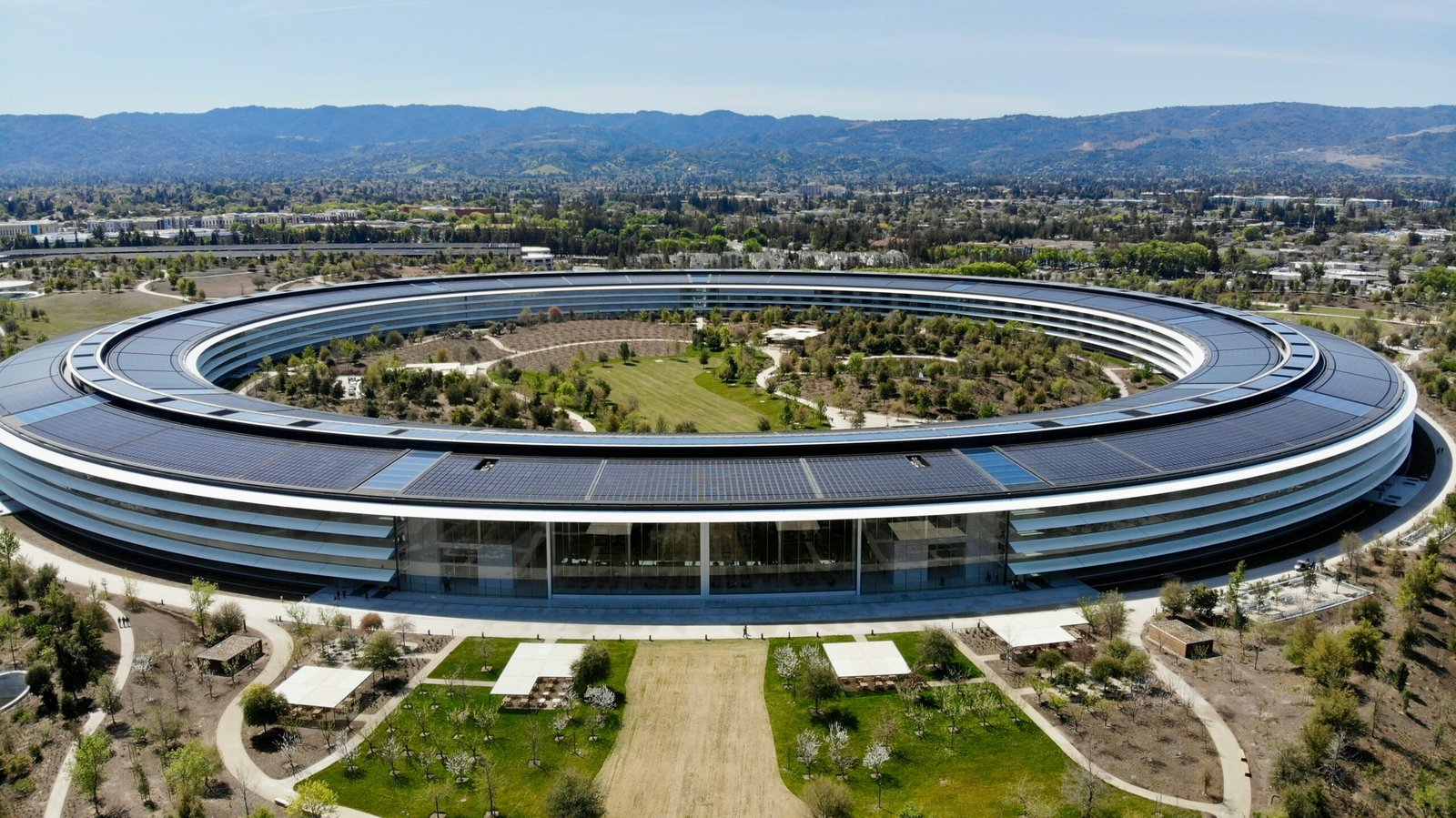Introduction
In recent years, there has been a significant shift in the way tech companies operate in California. With the advent of remote work policies, many firms have embraced the idea of allowing their employees to work from anywhere. This change has had a profound impact on the demand for commercial real estate in the state, particularly in tech hubs like Silicon Valley. In this article, we will explore the implications of this trend and discuss the potential future of office spaces and urban development in California.
The rise of remote work has been fueled by advancements in technology and a changing mindset among employers. With the increasing availability of high-speed internet and collaboration tools, companies have realized that they can maintain productivity and efficiency even when their employees are not physically present in the office. This has led to a shift in the way businesses view office spaces and the need for employees to be physically present in a centralized location.
As a result, the demand for commercial real estate in California has seen a significant decline in recent years. Many tech companies, once known for their sprawling campuses and extravagant office spaces, are now opting for smaller, more flexible workspaces. This trend has not only affected the commercial real estate market but has also had a ripple effect on urban development in the state.
One of the most noticeable impacts of this shift is the decrease in demand for office buildings in traditional tech hubs like Silicon Valley. These areas, once bustling with tech workers and filled with state-of-the-art office spaces, are now facing a surplus of vacant buildings. Landlords and property developers are being forced to rethink their strategies and find new ways to attract tenants.
Additionally, the decrease in demand for office spaces has also affected the surrounding communities. With fewer employees coming into the office on a daily basis, businesses that relied on foot traffic from office workers are struggling to stay afloat. Local restaurants, cafes, and shops that once thrived on the lunchtime rush are now facing a decline in customers and revenue.
However, while the shift to remote work has had its challenges, it has also opened up new opportunities for urban development in California. With fewer employees needing to be physically present in the office, companies are now able to consider alternative locations for their headquarters or satellite offices. This has led to the revitalization of smaller cities and towns outside of traditional tech hubs, as companies seek out more affordable and accessible locations.
Furthermore, the decrease in demand for office spaces has also sparked a conversation about the future of urban planning and design. As companies move away from the traditional office model, there is a growing need for more flexible and adaptable spaces. Architects and designers are now tasked with creating environments that can accommodate a variety of work styles and cater to the changing needs of employees.
In conclusion, the rise of remote work in California has had a profound impact on the demand for commercial real estate and the future of office spaces. While traditional tech hubs like Silicon Valley are facing a decline in demand for office buildings, smaller cities and towns are experiencing a revitalization as companies seek out alternative locations. This shift has not only affected the real estate market but has also sparked a conversation about the future of urban development and the need for more flexible workspaces.
Furthermore, remote work has proven to increase productivity and job satisfaction. Studies have shown that employees who work remotely are often more focused and motivated compared to those working in a traditional office setting. Without the distractions and interruptions commonly found in an office, remote workers can create a quiet and personalized work environment that suits their needs.
Moreover, remote work offers cost-saving benefits for both employees and employers. For employees, the expenses associated with commuting, such as transportation costs and parking fees, are eliminated. Additionally, remote workers can save money on work attire and meals, as they have the freedom to prepare their own meals at home. On the other hand, employers can save on office space and utility bills, as well as reduce the need for expensive office equipment.
Another advantage of remote work is the positive impact it has on the environment. With fewer employees commuting to a physical office, there is a significant reduction in carbon emissions from transportation. This contributes to a greener and more sustainable future, aligning with the growing concern for environmental conservation.
However, remote work does come with its challenges. Communication and collaboration can be more difficult when team members are not physically present in the same location. To overcome this, companies have implemented various communication tools and platforms, such as video conferencing and project management software, to ensure effective collaboration among remote teams.
In conclusion, the rise of remote work has revolutionized the way companies operate and employees work. It offers numerous benefits, including increased productivity, cost savings, and a better work-life balance. While it may present challenges in terms of communication and collaboration, the advantages far outweigh the drawbacks. As technology continues to advance, remote work is expected to become even more prevalent in the future.
The Rise of Co-Working Spaces
With the decrease in demand for traditional office spaces, landlords have been forced to think outside the box to fill their empty properties. This has led to the rise of co-working spaces, which have become increasingly popular among freelancers, entrepreneurs, and small businesses.
Co-working spaces offer a flexible and collaborative work environment, providing individuals and companies with the opportunity to work in a professional setting without the long-term commitment of a traditional lease. These spaces often come equipped with amenities such as high-speed internet, meeting rooms, and communal areas, fostering productivity and networking among members.
The growth of co-working spaces has not only benefited landlords looking to fill their vacant properties but has also created a thriving community for remote workers and small businesses. These spaces offer individuals the chance to work alongside like-minded professionals, providing opportunities for collaboration, knowledge sharing, and potential partnerships.
Furthermore, co-working spaces have become a hub for events, workshops, and networking opportunities. Many spaces host regular events to foster a sense of community and provide members with additional resources and support. These events range from industry-specific seminars to social gatherings, allowing members to expand their professional networks and gain valuable insights.
Overall, the rise of co-working spaces has transformed the commercial real estate landscape, offering a solution to the decreasing demand for traditional office spaces. These spaces not only provide landlords with a way to fill their properties but also create a vibrant and collaborative community for remote workers and small businesses.
Furthermore, the future of office spaces in California may also see a shift in the size and layout of these spaces. With remote work becoming more prevalent, companies may opt for smaller office spaces that cater to a rotating workforce. This means that employees may not have dedicated desks or workstations, but rather utilize shared spaces on an as-needed basis.
Another trend that may emerge in the future of office spaces is the integration of amenities and wellness programs. As companies strive to attract and retain top talent, they may invest in creating office environments that prioritize employee well-being. This could include features such as on-site gyms, meditation rooms, and healthy food options in cafeterias.
Moreover, the future of office spaces may also see an increased focus on sustainability and eco-friendly design. Companies may prioritize energy-efficient buildings, use of renewable materials, and implement recycling and waste reduction programs. This aligns with the growing awareness and concern for environmental issues, as well as the desire for companies to demonstrate their commitment to corporate social responsibility.
Additionally, the future of office spaces in California may also see the integration of smart technologies. With the advancement of Internet of Things (IoT) devices, offices may become more connected and automated. This could include features such as smart lighting systems, temperature control, and occupancy sensors that optimize energy usage and enhance the overall user experience.
Overall, the future of office spaces in California is likely to be shaped by the evolving needs and preferences of both companies and employees. As remote work continues to gain traction, office spaces may transform into flexible, collaborative, and employee-centric environments. The integration of technology, amenities, sustainability, and smart features will play a crucial role in creating workspaces that foster productivity, well-being, and innovation.
As tech hubs adapt to the rise of remote work, there may also be a shift in the types of amenities and services that are prioritized in these areas. With more people spending their workdays at home, there may be an increased demand for co-working spaces and shared office facilities. These spaces could provide a sense of community and collaboration for remote workers who still desire some separation between work and home life.
Additionally, the decrease in demand for office spaces could lead to a decrease in the cost of living in these tech hubs. Traditionally, the high cost of housing in cities like Silicon Valley has made it difficult for many workers to afford to live in these areas. However, with the potential repurposing of office buildings into residential units, there may be an increase in the availability of affordable housing options.
Furthermore, the shift towards remote work may also have implications for the environment. With fewer people commuting to offices, there may be a decrease in carbon emissions from transportation. This could have a positive impact on air quality and contribute to efforts to combat climate change.
Overall, the rise of remote work in tech hubs like Silicon Valley is likely to have far-reaching effects on urban development. From the repurposing of office buildings to changes in transportation infrastructure and the creation of new amenities, these areas will need to adapt to meet the changing needs of the population. However, with careful planning and consideration, these changes have the potential to create more sustainable and livable communities for all.
































